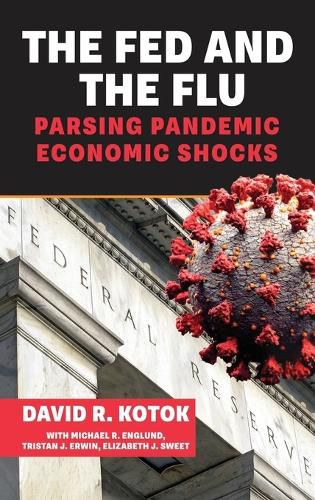Readings Newsletter
Become a Readings Member to make your shopping experience even easier.
Sign in or sign up for free!
You’re not far away from qualifying for FREE standard shipping within Australia
You’ve qualified for FREE standard shipping within Australia
The cart is loading…






This title is printed to order. This book may have been self-published. If so, we cannot guarantee the quality of the content. In the main most books will have gone through the editing process however some may not. We therefore suggest that you be aware of this before ordering this book. If in doubt check either the author or publisher’s details as we are unable to accept any returns unless they are faulty. Please contact us if you have any questions.
Over the century that intervened between the 1918 H1N1 Spanish Flu pandemic and the COVID-19 pandemic, the US Federal Reserve has deepened its understanding of the economic shocks that pandemics deliver. In fact, epidemic and pandemic shocks appear to have had similar characteristics as far back as the historical record can offer us clues. Further, human behavior has always been implicated in a pandemic's economic outcomes, as surely as pathogens are. The Fed's actions in response to COVID-19, based in part on its own evolving understanding of what it takes to stabilize an economy and financial system in the face of a pandemic shock, were successful in forestalling an economic and financial collapse when COVID struck.
In The Fed and the Flu: Parsing Pandemic Economic Shocks, David Kotok, along with co-authors Michael England, Tristan Erwin, and Elizabeth Sweet, examine the Fed's journey, insights from history, lessons from the world's experience with COVID, and the pandemic's economic impacts captured in charts. Every pandemic delivers an initial shock, but it also casts a longer shadow over the medium term. Most importantly, every pandemic is a learning opportunity that can be leveraged to better inform responses to future pandemics.
$9.00 standard shipping within Australia
FREE standard shipping within Australia for orders over $100.00
Express & International shipping calculated at checkout
This title is printed to order. This book may have been self-published. If so, we cannot guarantee the quality of the content. In the main most books will have gone through the editing process however some may not. We therefore suggest that you be aware of this before ordering this book. If in doubt check either the author or publisher’s details as we are unable to accept any returns unless they are faulty. Please contact us if you have any questions.
Over the century that intervened between the 1918 H1N1 Spanish Flu pandemic and the COVID-19 pandemic, the US Federal Reserve has deepened its understanding of the economic shocks that pandemics deliver. In fact, epidemic and pandemic shocks appear to have had similar characteristics as far back as the historical record can offer us clues. Further, human behavior has always been implicated in a pandemic's economic outcomes, as surely as pathogens are. The Fed's actions in response to COVID-19, based in part on its own evolving understanding of what it takes to stabilize an economy and financial system in the face of a pandemic shock, were successful in forestalling an economic and financial collapse when COVID struck.
In The Fed and the Flu: Parsing Pandemic Economic Shocks, David Kotok, along with co-authors Michael England, Tristan Erwin, and Elizabeth Sweet, examine the Fed's journey, insights from history, lessons from the world's experience with COVID, and the pandemic's economic impacts captured in charts. Every pandemic delivers an initial shock, but it also casts a longer shadow over the medium term. Most importantly, every pandemic is a learning opportunity that can be leveraged to better inform responses to future pandemics.